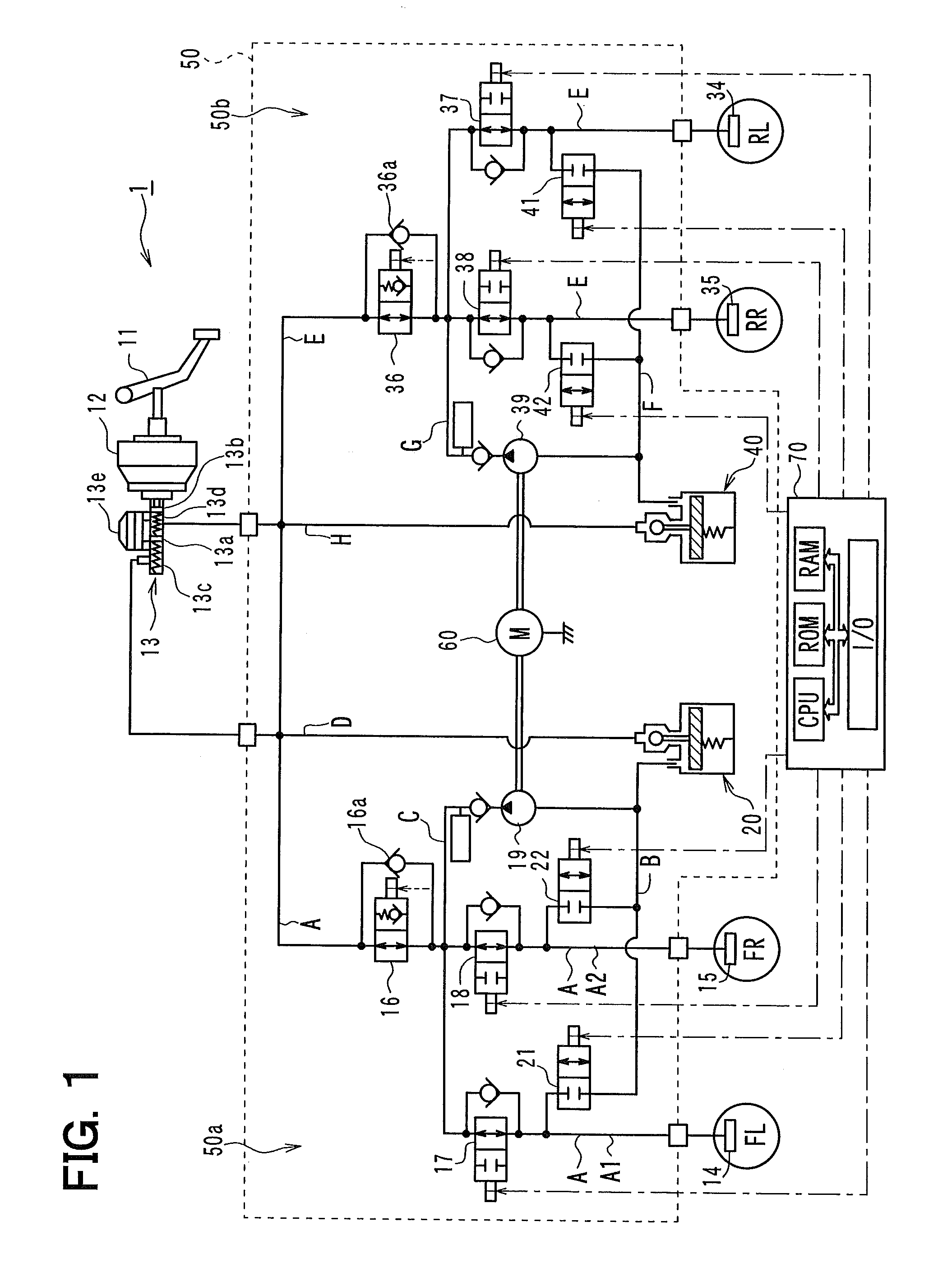Rotary pump device and vehicle brake control system
a technology of rotary pump and brake control system, which is applied in the direction of positive displacement liquid engine, piston pump, liquid fuel engine, etc., can solve the problems of insufficient pushing force (pressure) applied to the pump body, deformation of the pump body casing, and increase of the gap between parts for forming the casing, so as to improve the durability of the casing and reduce the rigidity
- Summary
- Abstract
- Description
- Claims
- Application Information
AI Technical Summary
Benefits of technology
Problems solved by technology
Method used
Image
Examples
second embodiment
[0116]A second embodiment of the present invention will be explained. A vehicle brake control system, to which a rotary pump device according to the present embodiment is applied, is similar to the vehicle brake control system of the first embodiment. Namely, a part of the rotary pump device shown in FIG. 2 is modified. Such modified portions will be explained with reference to FIG. 2.
[0117]According to the rotary pump device of the second embodiment, the outer peripheral portion of the second cylinder 71b is fixed to the inner peripheral surface of the cylindrical recessed portion 101a of the housing 101 by means of adhesive material, press insertion, and so on. The other portions are the same to the first embodiment.
[0118]The rotary pump device of the above structure operates basically in the same manner to the first embodiment. Since the second cylinder 71b is firmly fixed to the housing 101, the first pump casing (which is composed of the first to third cylinders 71a to 71c as w...
third embodiment
[0126]A third embodiment of the present invention will be explained. According to the third embodiment, the vehicle brake control system (incorporating the rotary pump device) of the first embodiment is used but the first pump casing provided in the pump device is axially moved so as to increase pressure increase response for the wheel cylinder pressure. Since the basic structure for the vehicle brake control system and its pump device are the same to the first embodiment, a different point, that is a control method of the brake control system and the pump device, will be explained.
[0127]At an initial checking stage for starting a vehicle engine, a vehicle stopping stage, a stopping stage of the vehicle movement control and so on, an operation for increasing the brake fluid pressure at the wheel cylinders 14 and 15 of only the first hydraulic circuit 50a is carried out (this is achieved in the same manner to the first embodiment already explained above), so that the first pump casin...
fourth embodiment
[0134]A fourth embodiment of the present invention will be explained. In the above third embodiment, the first pump casing is moved to its backward position in the insertion direction, for example, at the initial checking stage for starting the vehicle engine. According to the fourth embodiment, the first pump casing is mechanically moved to its backward position in the insertion direction. The brake control system as well as the rotary pump device is basically the same to that of the first embodiment. Explanation is made for those portions, which are different from the first embodiment.
[0135]FIG. 6 is a schematic cross sectional view showing a pump body 100 of a rotary pump device, which is incorporated into a vehicle brake control system according to the fourth embodiment of the present invention.
[0136]As shown in FIG. 6, a return spring 200 is provided between the first cylinder 71a and the bottom surface of the cylindrical recessed portion 101a, which is different from the pump ...
PUM
 Login to View More
Login to View More Abstract
Description
Claims
Application Information
 Login to View More
Login to View More - R&D
- Intellectual Property
- Life Sciences
- Materials
- Tech Scout
- Unparalleled Data Quality
- Higher Quality Content
- 60% Fewer Hallucinations
Browse by: Latest US Patents, China's latest patents, Technical Efficacy Thesaurus, Application Domain, Technology Topic, Popular Technical Reports.
© 2025 PatSnap. All rights reserved.Legal|Privacy policy|Modern Slavery Act Transparency Statement|Sitemap|About US| Contact US: help@patsnap.com



